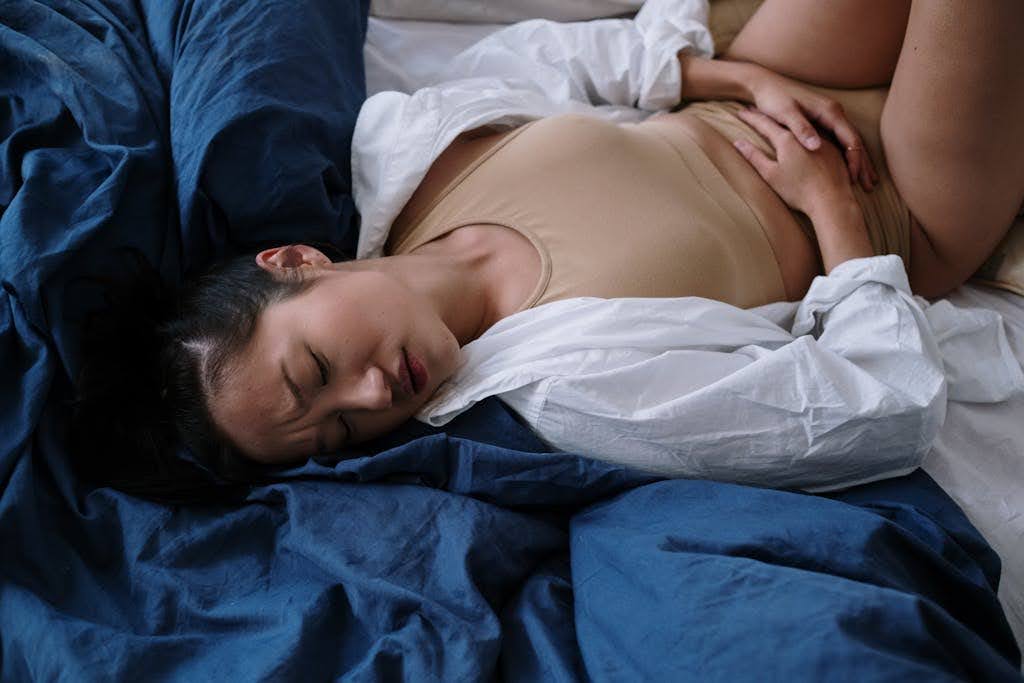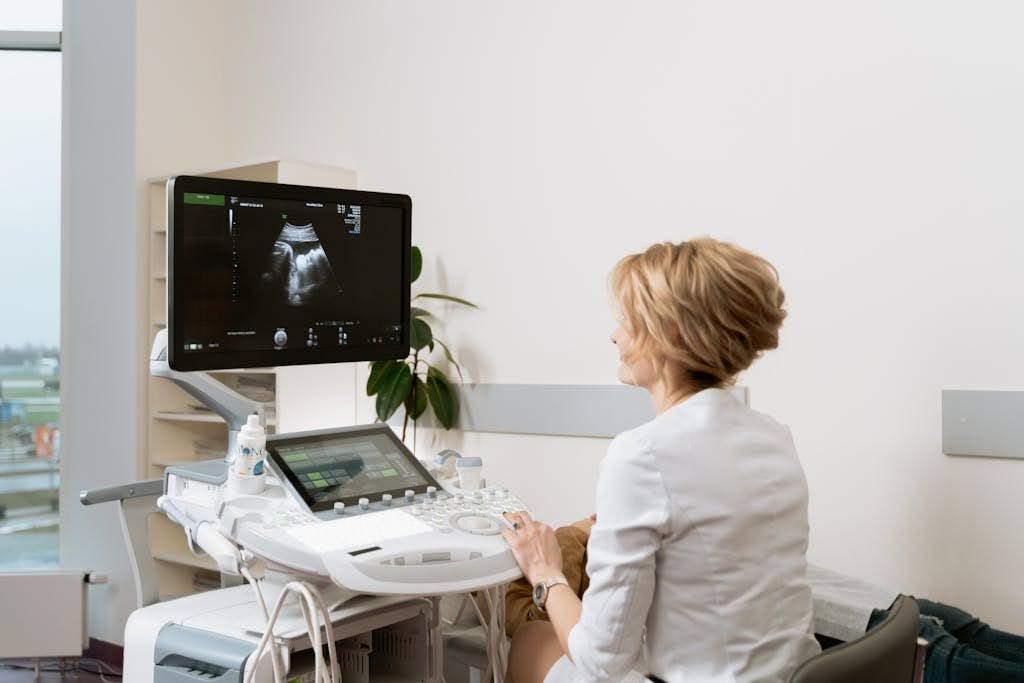LLQ pain, or left lower quadrant pain, refers to discomfort or pain experienced in the lower left side of the abdomen. This region houses various organs, including parts of the intestines, the left ovary in females, and the left kidney. Understanding the potential causes and implications of LLQ pain is essential for effective diagnosis and treatment.
 Understanding the Anatomy of the LLQ
Understanding the Anatomy of the LLQ
The left lower quadrant of the abdomen is a complex area that plays a crucial role in various bodily functions. It contains several vital organs and structures, which can be sources of pain when affected by disease or injury.
Key Organs in the LLQ
Colon: The descending colon and sigmoid colon are located here, which are part of the large intestine.
Ovary: In females, the left ovary is situated in this quadrant, playing a key role in reproductive health.
Kidney: The left kidney is also positioned in the LLQ, responsible for filtering blood and producing urine.
Surrounding Structures
In addition to the major organs, the LLQ is surrounded by muscles, blood vessels, and nerves that can also contribute to pain. Conditions affecting these structures can manifest as LLQ pain, making it essential to consider all potential sources.
Moreover, the LLQ is bordered by several important muscles, including the transversus abdominis and the oblique muscles, which play a significant role in core stability and movement. These muscles can become strained or injured, leading to discomfort that may mimic organ-related pain. Additionally, the blood supply to the LLQ is primarily provided by branches of the abdominal aorta, which can be affected by vascular conditions that may cause pain or other symptoms in this area.
Understanding the intricate relationships between these organs and structures is vital for diagnosing conditions such as diverticulitis, ovarian cysts, or kidney stones. Each of these conditions can present with distinct symptoms, yet they may share overlapping pain patterns in the LLQ, complicating the clinical picture. Therefore, a comprehensive assessment that includes imaging studies and laboratory tests is often necessary to accurately identify the underlying cause of LLQ discomfort.
Common Causes of LLQ Pain
LLQ pain can arise from a variety of causes, ranging from benign to serious conditions. Identifying the underlying issue is crucial for appropriate treatment.
 Gastrointestinal Issues
Gastrointestinal Issues
Many gastrointestinal disorders can lead to LLQ pain. Some of the most common include:
Diverticulitis: Inflammation or infection of diverticula in the colon can cause significant pain and discomfort. This condition often presents with symptoms such as fever, nausea, and changes in bowel habits, making it essential to seek medical advice for proper diagnosis and treatment.
Constipation: A buildup of stool in the intestines can lead to cramping and pain in the LLQ. Chronic constipation can also result in complications like hemorrhoids or anal fissures, which can further exacerbate discomfort and lead to a cycle of pain and avoidance of bowel movements.
Colitis: Inflammation of the colon, which can be due to infections, inflammatory bowel disease, or ischemia. Patients may experience diarrhea, rectal bleeding, and abdominal cramping, necessitating a thorough evaluation to determine the underlying cause.
Gynecological Conditions
In females, LLQ pain may be associated with various gynecological conditions, including:
Ovarian Cysts: Fluid-filled sacs on the ovary can cause discomfort, particularly if they rupture. Symptoms may include sharp pain, bloating, and changes in menstrual cycles, prompting the need for ultrasound imaging to assess the cyst's size and potential complications.
Ectopic Pregnancy: A pregnancy that occurs outside the uterus can lead to severe pain and requires immediate medical attention. This condition can be life-threatening if not treated promptly, as it may result in internal bleeding and necessitate surgical intervention.
Pelvic Inflammatory Disease (PID): An infection of the reproductive organs that can cause significant pain and discomfort. PID can lead to long-term complications such as infertility or chronic pelvic pain if not addressed early, highlighting the importance of regular gynecological check-ups and prompt treatment of any infections.
In addition to these conditions, LLQ pain may also stem from urinary tract issues, such as kidney stones or urinary tract infections, which can present with symptoms like painful urination and flank pain. Furthermore, musculoskeletal problems, such as muscle strains or hernias, can mimic gastrointestinal or gynecological pain, complicating the diagnostic process. Therefore, a comprehensive evaluation by a healthcare professional is essential to accurately determine the cause of LLQ pain and initiate appropriate treatment strategies.
Symptoms Accompanying LLQ Pain
LLQ pain may present with a variety of accompanying symptoms, which can help in diagnosing the underlying cause. Recognizing these symptoms is vital for timely medical intervention. The left lower quadrant (LLQ) of the abdomen houses several vital organs, including parts of the colon, the left ovary in females, and the left kidney, making it essential to pay attention to any discomfort in this area.
Common Symptoms
Fever: Often indicates an infection or inflammation.
Nausea and Vomiting: May accompany gastrointestinal issues or infections.
Changes in Bowel Habits: Diarrhea or constipation can provide clues to the underlying condition.
Abdominal Tenderness: This can be a sign of localized inflammation or irritation in the abdominal cavity.
Gas and Bloating: These symptoms may suggest digestive issues, such as irritable bowel syndrome or food intolerances.
When to Seek Medical Attention
While some LLQ pain may resolve on its own, certain symptoms warrant immediate medical attention:
Severe, persistent pain that does not improve.
Signs of infection, such as fever or chills.
Unexplained weight loss or changes in appetite.
Blood in stool or urine, which could indicate a more serious condition.
Difficulty urinating or painful urination, suggesting a potential urinary tract infection or kidney issue.
In addition to these symptoms, it is also important to consider the duration and intensity of the LLQ pain. Acute pain that comes on suddenly may point to conditions such as diverticulitis or an ovarian cyst rupture, while chronic pain that develops gradually could be indicative of issues like inflammatory bowel disease or chronic constipation. Keeping a detailed record of symptoms, including when they occur and any potential triggers, can be incredibly helpful for healthcare providers in determining the right course of action.
Furthermore, understanding the context of the pain is crucial. For instance, if the pain is accompanied by recent travel, dietary changes, or a history of gastrointestinal disorders, these factors can significantly influence the diagnosis. Additionally, for women, menstrual cycles can also play a role in LLQ pain, as conditions like endometriosis or ovarian torsion may present similarly. Therefore, a comprehensive evaluation that includes a thorough medical history and possibly imaging studies is often necessary to pinpoint the exact cause of LLQ pain.
Diagnostic Approaches
When experiencing LLQ pain, healthcare providers typically employ a range of diagnostic methods to determine the underlying cause. A thorough understanding of these approaches can help patients prepare for their medical visits.
Medical History and Physical Examination
A detailed medical history and physical examination are often the first steps in diagnosing LLQ pain. Providers will ask about:
Duration and intensity of pain.
Associated symptoms, such as fever or changes in bowel habits.
Medical history, including previous surgeries or conditions.
In addition to these questions, the provider may also inquire about lifestyle factors that could contribute to LLQ pain. This includes dietary habits, exercise routines, and any recent travel history, which can be particularly relevant in cases of infectious diseases. Understanding a patient's family history of gastrointestinal disorders can also provide valuable insights, as certain conditions may have a hereditary component. The physical examination may involve palpation of the abdomen to assess tenderness and any signs of swelling or masses, which can help narrow down potential diagnoses.
Imaging Studies
 If initial assessments suggest a more serious condition, imaging studies may be ordered. Common imaging techniques include:
If initial assessments suggest a more serious condition, imaging studies may be ordered. Common imaging techniques include:
Ultrasound: Particularly useful for evaluating gynecological issues and abdominal organs.
CT Scan: Provides detailed images of the abdominal organs, helping to identify conditions like appendicitis or diverticulitis.
X-rays: Can help detect obstructions or perforations in the gastrointestinal tract.
Each imaging modality has its strengths and limitations. For instance, while a CT scan offers comprehensive views and can reveal complex conditions, it does involve exposure to radiation, which is a consideration for certain patient populations. On the other hand, ultrasound is a radiation-free option that is particularly beneficial for pregnant women or children.
Additionally, healthcare providers may also consider advanced imaging techniques such as MRI in specific cases, especially when soft tissue evaluation is necessary, or when they suspect conditions like tumors or inflammatory diseases that may not be as visible on standard imaging. The choice of imaging study will depend on the clinical scenario, the patient's history, and the provider's judgment to ensure the most accurate diagnosis is achieved.
Treatment Options for LLQ Pain
Treatment for LLQ pain varies widely depending on the underlying cause. Understanding these options can empower patients to actively engage in their care.
Medications
In many cases, medications can effectively manage LLQ pain. Common options include:
Antibiotics: Prescribed for infections such as diverticulitis or PID.
Anti-inflammatory Drugs: Nonsteroidal anti-inflammatory drugs (NSAIDs) can help alleviate pain and reduce inflammation.
Antispasmodics: These medications can relieve cramping associated with gastrointestinal disorders.
In addition to these common medications, patients may also explore the use of probiotics, which can help restore the natural balance of gut bacteria and may alleviate symptoms related to digestive issues. Furthermore, over-the-counter medications like acetaminophen can provide additional pain relief for those who may not tolerate NSAIDs well. It's essential for patients to consult with their healthcare provider to determine the most appropriate medication regimen tailored to their specific needs and medical history.
Surgical Interventions
In some cases, surgical intervention may be necessary, particularly for conditions that do not respond to conservative treatment. Surgical options may include:
Appendectomy: Removal of the appendix in cases of appendicitis.
Oophorectomy: Surgical removal of an ovary, often performed for ovarian cysts or tumors.
Resection: In severe cases of diverticulitis, a portion of the colon may need to be removed.
Beyond these procedures, laparoscopic surgery has become increasingly popular due to its minimally invasive nature, which often results in shorter recovery times and less postoperative pain. Patients may also consider consulting with a colorectal surgeon or a gynecologist, depending on the underlying issue, to discuss the potential benefits and risks of surgery. In some instances, a multidisciplinary approach involving nutritionists and physical therapists may also be beneficial to enhance recovery and prevent future episodes of pain.
Preventive Measures
While not all cases of LLQ pain can be prevented, certain lifestyle changes may reduce the risk of developing conditions that lead to this type of pain.
Dietary Adjustments
Maintaining a healthy diet is crucial for digestive health. Consider the following dietary tips:
Increase fiber intake to promote regular bowel movements.
Stay hydrated to prevent constipation.
Avoid excessive consumption of processed foods and sugars.
In addition to these tips, incorporating a variety of fruits and vegetables into your meals can provide essential vitamins and minerals that support overall gastrointestinal function. Foods rich in probiotics, such as yogurt and fermented products, can also enhance gut health by promoting a balanced microbiome. Furthermore, keeping a food diary may help identify any specific triggers that exacerbate LLQ pain, allowing for more tailored dietary choices.
Regular Exercise
Engaging in regular physical activity can help maintain digestive health and prevent conditions that may lead to LLQ pain. Aim for at least 150 minutes of moderate exercise each week.
Incorporating both aerobic exercises, such as walking, swimming, or cycling, and strength training can improve muscle tone and support proper digestion. Activities like yoga and Pilates not only enhance flexibility but also promote relaxation, which can alleviate stress-related digestive issues. Additionally, taking short breaks to stretch or walk during long periods of sitting can significantly benefit your digestive system and overall well-being.
Living with LLQ Pain
For individuals experiencing chronic LLQ pain, understanding how to manage symptoms and maintain a good quality of life is essential.
Support Systems
Connecting with support groups or healthcare professionals can provide valuable resources and emotional support. Sharing experiences with others facing similar challenges can be beneficial.
Mindfulness and Stress Management
Stress can exacerbate pain symptoms. Incorporating mindfulness practices, such as meditation or yoga, may help manage stress and improve overall well-being.
Getting to the Root of LLQ Pain: What You Need to Know
Left lower quadrant (LLQ) pain can signal a variety of health issues, from minor to more serious conditions. Understanding what’s happening inside your body—and when to seek care—is key to feeling better, faster. With expert-backed insights from Doctronic, you can take charge of your health, get the right treatment, and return to your routine with confidence.


 Understanding the Anatomy of the LLQ
Understanding the Anatomy of the LLQ Gastrointestinal Issues
Gastrointestinal Issues If initial assessments suggest a more serious condition, imaging studies may be ordered. Common imaging techniques include:
If initial assessments suggest a more serious condition, imaging studies may be ordered. Common imaging techniques include: